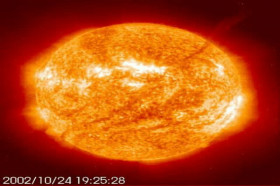
Rainin' in My Heart - Slim Harpo - 1961.Rain, Rain, Rain - Frankie Laine and The Four Lads - 1954.

 What Have They Done to the Rain - The Searchers - 1965. The Day the Rains Came - Raymond Lefevre - 1958. Watermelon Weather - Perry Como and Eddie Fisher - 1952. Raining in My Heart - Peppermint Harris - 1950. The Rains Came - Sir Douglas Quintet - 1966. Let the Four Winds Blow - Roy Brown - 1957. September in the Rain - Dinah Washington - 1961. It Might as Well Rain Until September - Carole King - 1962. Don't Go Out Into the Rain (You're Going to Melt). Walking in the Rain - The Ronettes - 1964. Wild is the Wind - Johnny Mathis - 1957. With the Wind and the Rain in Your Hair - Pat Boone - 1959. Rhapsody in the Rain - Lou Christie - 1966. The Day the Rains Came - Jane Morgan - 1958. A Garden in the Rain - The Four Aces - 1952. Let the Four Winds Blow - Fats Domino - 1961. The Sun Ain't Gonna Shine (Anymore) - The Walker. Cast Your Fate to the Wind - Vince Guaraldi Trio - 1963. Sunshine, Lollipops and Rainbows - Lesley Gore - 1965. Rain Rain Go Away - Bobby Vinton - 1962. Tell It to the Rain - The 4 Seasons - 1967. Rain on the Roof - The Lovin' Spoonful - 1966. Blowin' in the Wind - Stevie Wonder - 1966. Baby the Rain Must Fall - Glenn Yarbrough - 1965. Cast Your Fate to the Wind - Sounds Orchestral - 1965. The Breeze and I - Caterina Valente - 1955. Don't Let the Rain Come Down (Crooked Little Man). Soft Summer Breeze - Eddie Heywood - 1956. You Are My Sunshine - Ray Charles - 1962. Crying in the Rain - The Everly Brothers - 1962. Stormy - Classics IV featuring Dennis Yost - 1968. I Wish it Would Rain - The Temptations - 1968. Heat Wave - Martha and the Vandellas - 1963. Rainy Day Women #12 & 35 - Bob Dylan - 1966. We'll Sing in the Sunshine - Gale Garnett - 1964. Blowin' in the Wind - Peter, Paul and Mary - 1963. Rhythm of the Rain - The Cascades - 1963. The Rain, the Park and Other Things - The Cowsills - 1967. Just Walking in the Rain - Johnnie Ray - 1956. Aquarius/Let the Sunshine In - The 5th Dimension - 1969. Solar flares and CMEs are the most powerful explosions in our solar system. When particularly strong, a CME can also interfere in power utility grids, which at their worst can cause electricity shortages and power outages. When charged particles from a CME reach areas near Earth, they can trigger intense lights in the sky, called auroras. They explode into space at very high speed when the Sun’s magnetic field lines suddenly reorganize. CMEs are huge bubbles of radiation and particles from the Sun. Solar flares are sometimes accompanied by a coronal mass ejection (CME for short). A loop of solar material, a coronal mass ejection (CME), can also be seen rising up off the right limb of the Sun. NASA's Solar Dynamics Observatory captured this imagery of a solar flare, as seen in the bright flash. If a solar flare is very intense, the radiation it releases can interfere with our radio communications here on Earth. Solar flares release a lot of radiation into space. This can cause a sudden explosion of energy called a solar flare. The magnetic field lines near sunspots often tangle, cross, and reorganize. Image credit: NASA/SDO/AIA/HMI/Goddard Space Flight Center Solar Flares In this image, you can see an active region on the sun with dark sunspots. These magnetic fields are so strong that they keep some of the heat within the Sun from reaching the surface. Why are sunspots relatively cool? It’s because they form at areas where magnetic fields are particularly strong. The temperature of a sunspot is still very hot though-around 6,500 degrees Fahrenheit! They appear dark because they are cooler than other parts of the Sun’s surface. Sunspots are areas that appear dark on the surface of the Sun. The glowing hot gas traces out the twists and loops of the Sun’s magnetic field lines. Solar activity can have effects here on Earth, so scientists closely monitor solar activity every day.Īn image of active regions on the Sun from NASA’s Solar Dynamics Observatory. The amount of solar activity changes with the stages in the solar cycle. Sometimes the Sun’s surface is very active. This motion creates a lot of activity on the Sun's surface, called solar activity.
What Have They Done to the Rain - The Searchers - 1965. The Day the Rains Came - Raymond Lefevre - 1958. Watermelon Weather - Perry Como and Eddie Fisher - 1952. Raining in My Heart - Peppermint Harris - 1950. The Rains Came - Sir Douglas Quintet - 1966. Let the Four Winds Blow - Roy Brown - 1957. September in the Rain - Dinah Washington - 1961. It Might as Well Rain Until September - Carole King - 1962. Don't Go Out Into the Rain (You're Going to Melt). Walking in the Rain - The Ronettes - 1964. Wild is the Wind - Johnny Mathis - 1957. With the Wind and the Rain in Your Hair - Pat Boone - 1959. Rhapsody in the Rain - Lou Christie - 1966. The Day the Rains Came - Jane Morgan - 1958. A Garden in the Rain - The Four Aces - 1952. Let the Four Winds Blow - Fats Domino - 1961. The Sun Ain't Gonna Shine (Anymore) - The Walker. Cast Your Fate to the Wind - Vince Guaraldi Trio - 1963. Sunshine, Lollipops and Rainbows - Lesley Gore - 1965. Rain Rain Go Away - Bobby Vinton - 1962. Tell It to the Rain - The 4 Seasons - 1967. Rain on the Roof - The Lovin' Spoonful - 1966. Blowin' in the Wind - Stevie Wonder - 1966. Baby the Rain Must Fall - Glenn Yarbrough - 1965. Cast Your Fate to the Wind - Sounds Orchestral - 1965. The Breeze and I - Caterina Valente - 1955. Don't Let the Rain Come Down (Crooked Little Man). Soft Summer Breeze - Eddie Heywood - 1956. You Are My Sunshine - Ray Charles - 1962. Crying in the Rain - The Everly Brothers - 1962. Stormy - Classics IV featuring Dennis Yost - 1968. I Wish it Would Rain - The Temptations - 1968. Heat Wave - Martha and the Vandellas - 1963. Rainy Day Women #12 & 35 - Bob Dylan - 1966. We'll Sing in the Sunshine - Gale Garnett - 1964. Blowin' in the Wind - Peter, Paul and Mary - 1963. Rhythm of the Rain - The Cascades - 1963. The Rain, the Park and Other Things - The Cowsills - 1967. Just Walking in the Rain - Johnnie Ray - 1956. Aquarius/Let the Sunshine In - The 5th Dimension - 1969. Solar flares and CMEs are the most powerful explosions in our solar system. When particularly strong, a CME can also interfere in power utility grids, which at their worst can cause electricity shortages and power outages. When charged particles from a CME reach areas near Earth, they can trigger intense lights in the sky, called auroras. They explode into space at very high speed when the Sun’s magnetic field lines suddenly reorganize. CMEs are huge bubbles of radiation and particles from the Sun. Solar flares are sometimes accompanied by a coronal mass ejection (CME for short). A loop of solar material, a coronal mass ejection (CME), can also be seen rising up off the right limb of the Sun. NASA's Solar Dynamics Observatory captured this imagery of a solar flare, as seen in the bright flash. If a solar flare is very intense, the radiation it releases can interfere with our radio communications here on Earth. Solar flares release a lot of radiation into space. This can cause a sudden explosion of energy called a solar flare. The magnetic field lines near sunspots often tangle, cross, and reorganize. Image credit: NASA/SDO/AIA/HMI/Goddard Space Flight Center Solar Flares In this image, you can see an active region on the sun with dark sunspots. These magnetic fields are so strong that they keep some of the heat within the Sun from reaching the surface. Why are sunspots relatively cool? It’s because they form at areas where magnetic fields are particularly strong. The temperature of a sunspot is still very hot though-around 6,500 degrees Fahrenheit! They appear dark because they are cooler than other parts of the Sun’s surface. Sunspots are areas that appear dark on the surface of the Sun. The glowing hot gas traces out the twists and loops of the Sun’s magnetic field lines. Solar activity can have effects here on Earth, so scientists closely monitor solar activity every day.Īn image of active regions on the Sun from NASA’s Solar Dynamics Observatory. The amount of solar activity changes with the stages in the solar cycle. Sometimes the Sun’s surface is very active. This motion creates a lot of activity on the Sun's surface, called solar activity. 
The Sun’s gases are constantly moving, which tangles, stretches and twists the magnetic fields. It has electrically charged gases that generate areas of powerful magnetic forces.

The surface of the Sun is a very busy place.








 0 kommentar(er)
0 kommentar(er)
